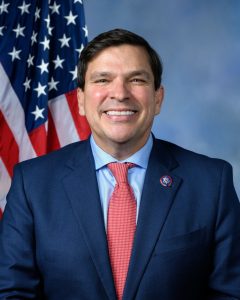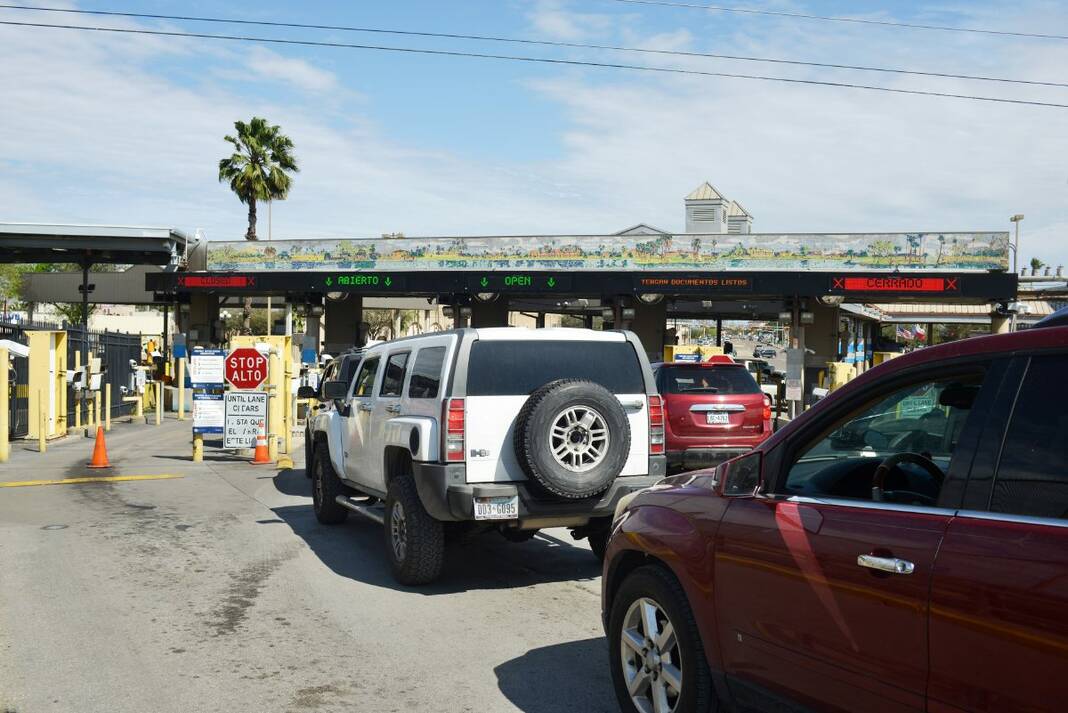|
Only have a minute? Listen instead
Getting your Trinity Audio player ready...
|

U.S. Rep. Vicente Gonzalez on July 18 sent a letter to U.S. Customs and Border Protection Acting Director Troy Miller asking him to address what Gonzalez says is an intermittent but recurring issue of excessive wait times at land ports-of-entry in Brownsville.
Gonzalez told the Brownsville Herald that the letter was in response to recent reports from constituents about long wait times — as much as six hours at the B&M International Bridge, Veterans International Bridge at Los Tomates and also the Free Trade International Bridge at Los Indios, he said.
Gonzalez wrote to Miller that he had also heard reports that only one or two General and Ready lanes had been open in recent days at the Gateway International Bridge downtown, “causing hours of traffic delays.”
Not only is it dangerous for people to have to wait for hours in record heat, it slows down commerce, he said, noting that Veterans and Los Indios account for $10.5 billion in cross-border trade each year. In fact, most of the constituents he’s been hearing from are owners of logistics firms and other companies that deal in cross-border shipping, Gonzalez said.
“They’re the first ones you hear from,” he said. “It’s all developed in the last few days, but it happens intermittently all the time. That’s why we thought, OK, we need to get the commissioner involved and say what can we do to make sure the bridges in our region have enough agents, that they’re manned well enough that we’re not going to have problems.”
In the letter to Miller, Gonzalez wrote that “long wait times have an immediate economic impact on local communities, cause delays in our supply chains, and affect thousands of cross-border workers and students who live in Mexico and work and study in the Rio Grande Valley. The efficient flow of cross-border travel and international trade is critical to the state of Texas and our nation’s economic stability.”
Gonzalez said it’s too early to have received a response.
“At the end of the day, we have an agent shortage because they can’t train enough fast enough,” he said. “That’s just an ongoing problem. We have a recruitment issue, and it trickles all the way down. What they’re telling us they just don’t have enough agents.”
Gonzalez said he’s hoping for relief through a CBP program called the National Reassignment Opportunity Bulletin.

“It moves CBP officers around to places where they need them, and we’re hoping that they can move agents to our area,” he said. “Sometimes one area gets busier than others. Right now clearly we have a problem.”
Gonzalez said he thinks some areas on the U.S.-Canada border may have more CBP agents than they need.
At any rate, he wrote Miller that he’s ready to work with him and CBP to resolve the problem and strongly urged him to “implement effective measures to facilitate an orderly flow of traffic promptly.”
“Whatever resources they need, then let us know. How can we be helpful?” Gonzalez told the Herald. “I’m not blaming anyone. There’s a problem, right? What do we need to do to fix it, is what I’m asking. We need to fix this permanently.”
In the letter to Miller, he pointed out that excessive wait times not only affect trade and people’s ability to get to where they’re going quickly, they also affect “the health and well-being of travelers, including children, families, and the elderly, who are unable to use restrooms or stop for water and food.”
“Waiting for hours in record-high temperatures is a significant threat to the health of travelers,” Gonzalez wrote.
He said he took concerns straight to the top of CPB because it’s only at that level that the problem can be resolved, he said.
“I don’t think it’s anything that a port director can fix,” Gonzalez said.
In a statement the agency sent to the Herald in response to a request for comment, CBP said it “continues to experience heavy weekend passenger traffic during the summer at Brownsville Port of Entry and wait times were higher than normal. CBP continues to monitor traffic flows, make adjustments as necessary and traffic has returned to normal levels.”



